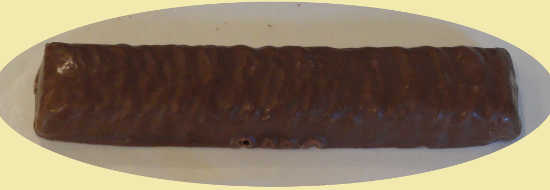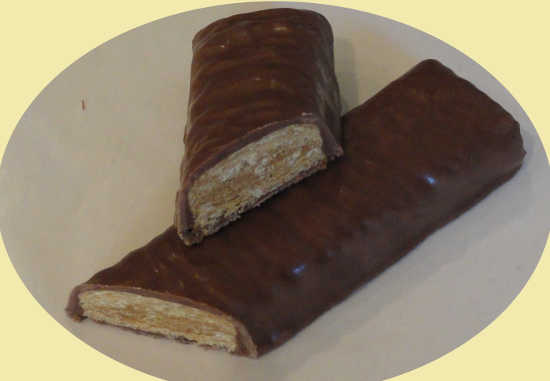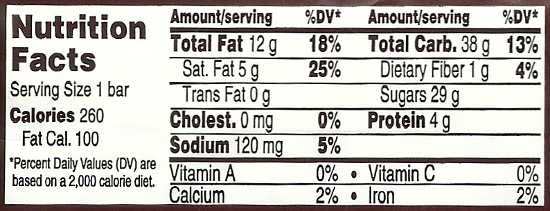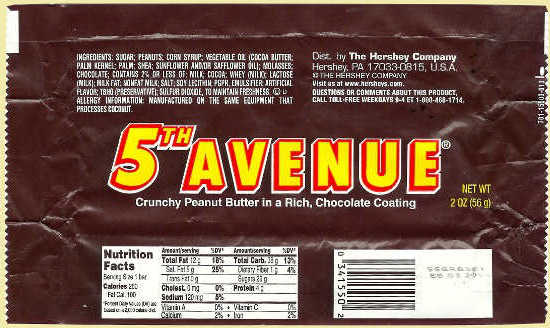5th Avenue
Crunchy Peanut Butter in a Rich, Chocolate Coating

I always knew 5th Avenue bars have been around for quite a long time, because this was my father's favorite candy bar.
|
Although I'm sure those he enjoyed as a kid were a mite different than the current ones. Oops - but wait - my father already had his own
business in Chicago when these bars were introduced in Philadelphia! So much for the 'enjoyed as a kid' theory! Still, even if nothing else were different, I think that in 1936 few if any foods contained TBHQ, PGPR, shea oil or even corn syrup. Another difference between old and new - I personally am old enough to remember when one of these bars would have two almond pieces (halves, I think) on top, under the chocolate coating. In my view it was such small details that used to set it apart from some of its competition, such as Butterfingers. |
  |
5th Avenue bar was invented in 1936 by - you would never guess this - Luden's (of cough drops fame). Speaking of 'never guess this,' I guess this means you can add it to your list of great trivia questions. It's now produced by Hershey's.
Ingredients and Nutrition

|
The ingredients list is
interesting. There are three 'chemical factory' sort of ingredients -
polyglycerol polyricinoleate (PGPR), tertiary butylhydroquinone (TBHQ),
and sulfur dioxide. These are all FDA approved, although I try to
limit my personal intake of chemicals that I can't pronounce. The good news is the dread "hydrogenated" appears nowhere in the ingredients list. |
INGREDIENTS: SUGAR; |


I paid $1.19 for this 1.45 ounce bar. For comparison purposes, that's $9.52 per pound, just
slightly below the average pricing for popular chocolate bars.
It has a total of 260 calories, with 100 of them (38%) from fat.
I
do like 5th Avenue bars - only slightly biased perhaps because it was
my dad's favorite - but I eat one only occasionally because I prefer
something with a shorter and more natural ingredients list.
I'm
giving this my personal score of 3.6 out of 5 stars for Overall
Enjoyment, 2.4 for Nutrition, and 3.7 for Value. Keep in mind this is
just my personal opinion. Your mileage may vary, and there's no
accounting for taste.
Now you know what a 5th Avenue bar is.
Any questions? You know where my Contact Page is!
Home Chocolate Bars 5th Avenue
5th Avenue, in New York City (Manhattan), runs almost seven miles north from Washington Square Park to the Harlem River at 142nd Street. On the way it passes ten museums, Central Park, and some of the most expensive retail real estate in the world.




